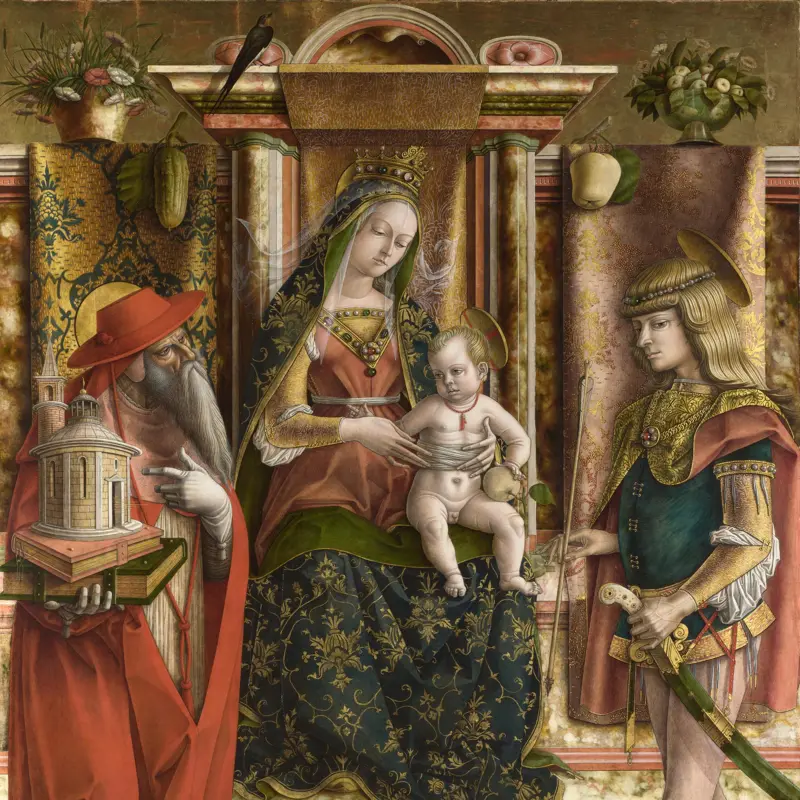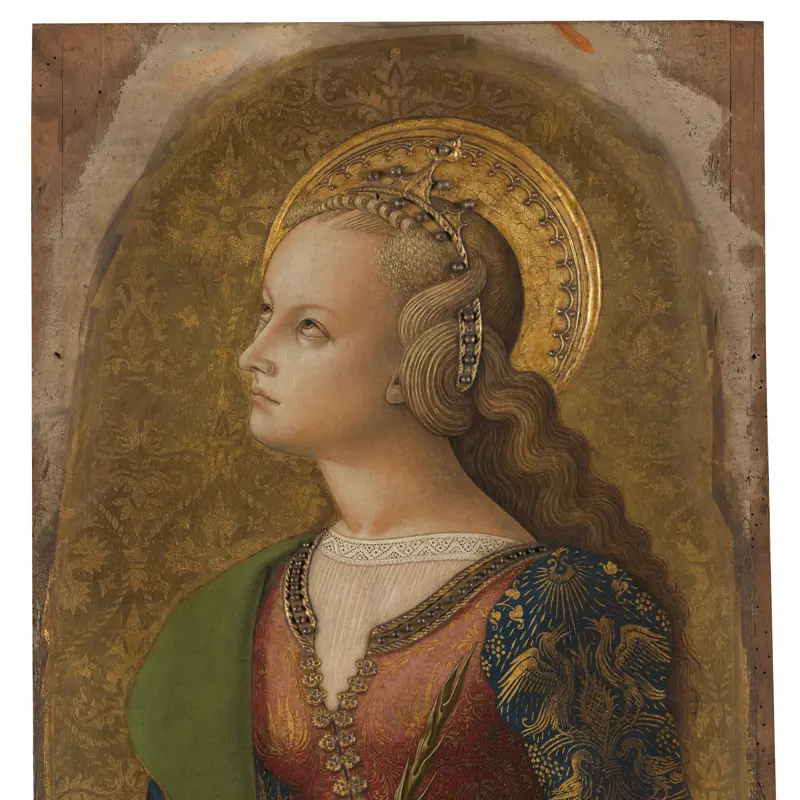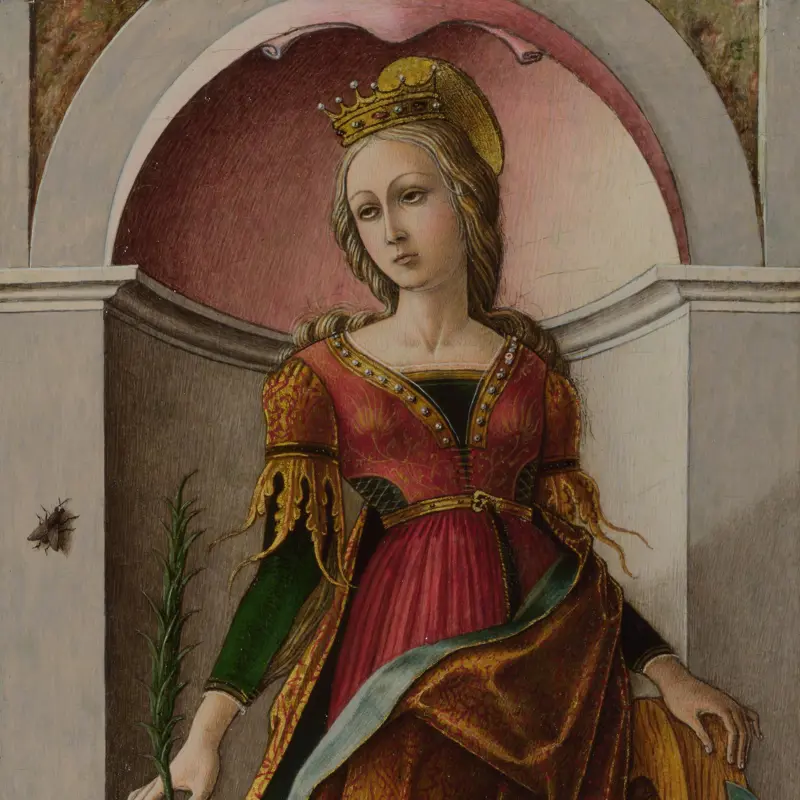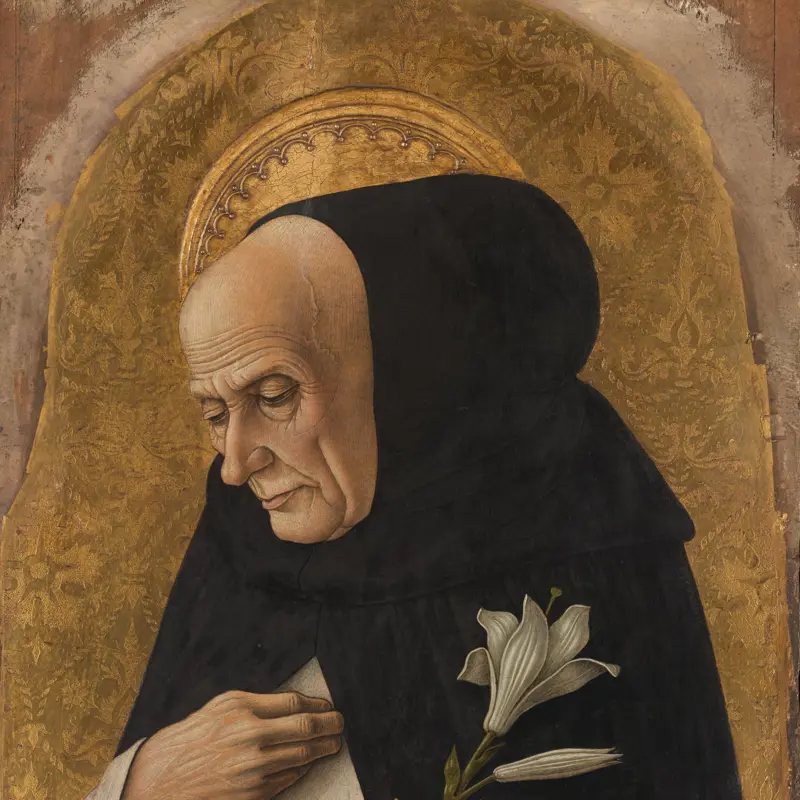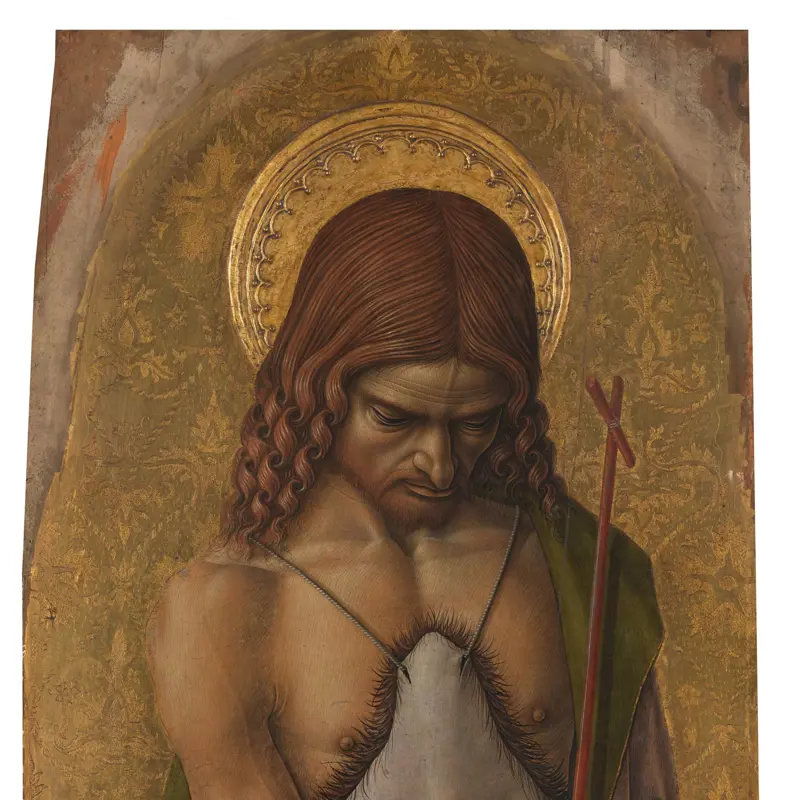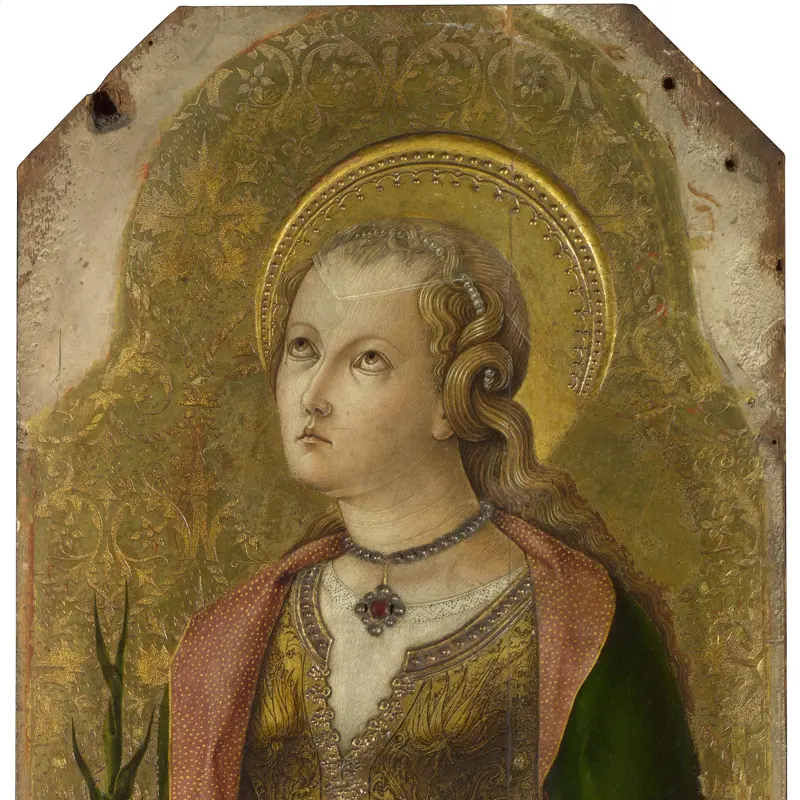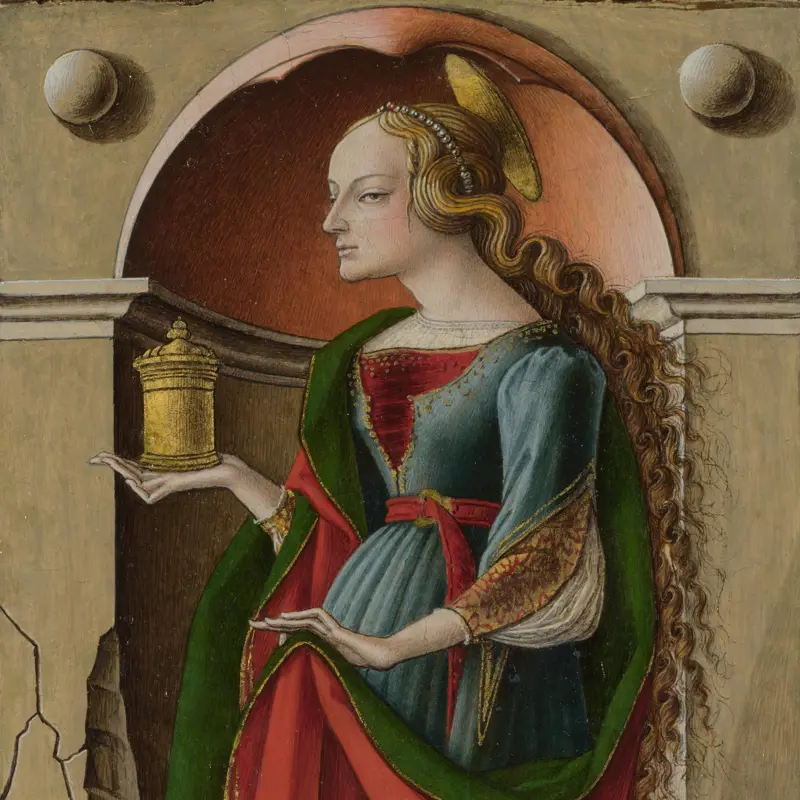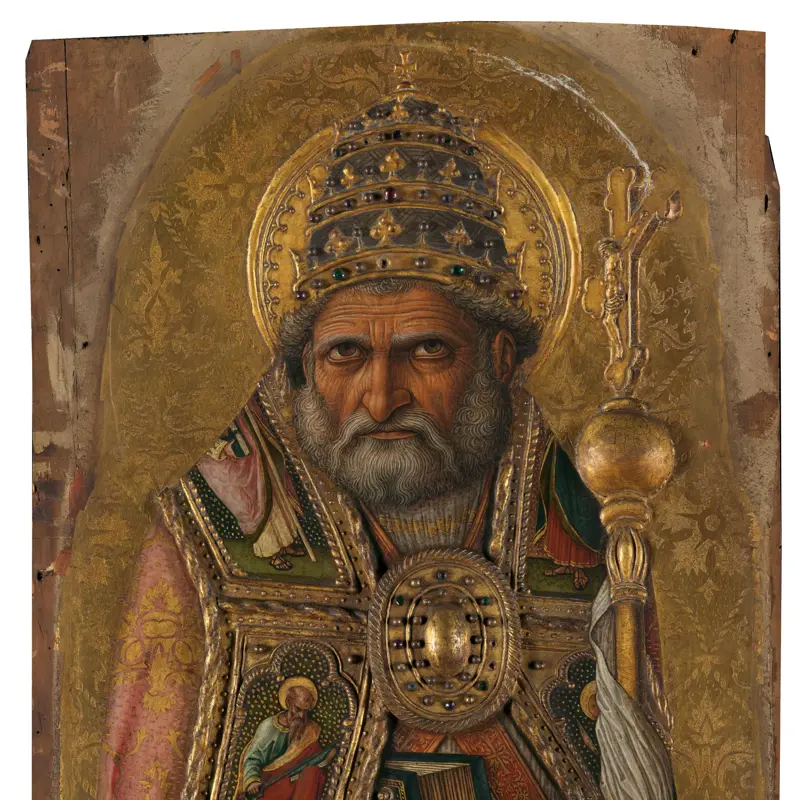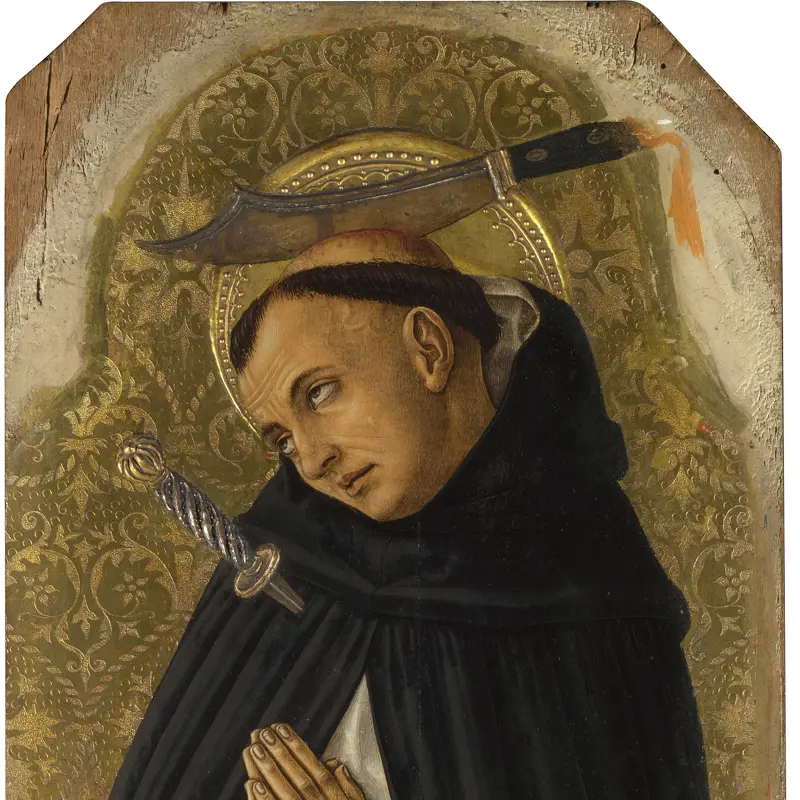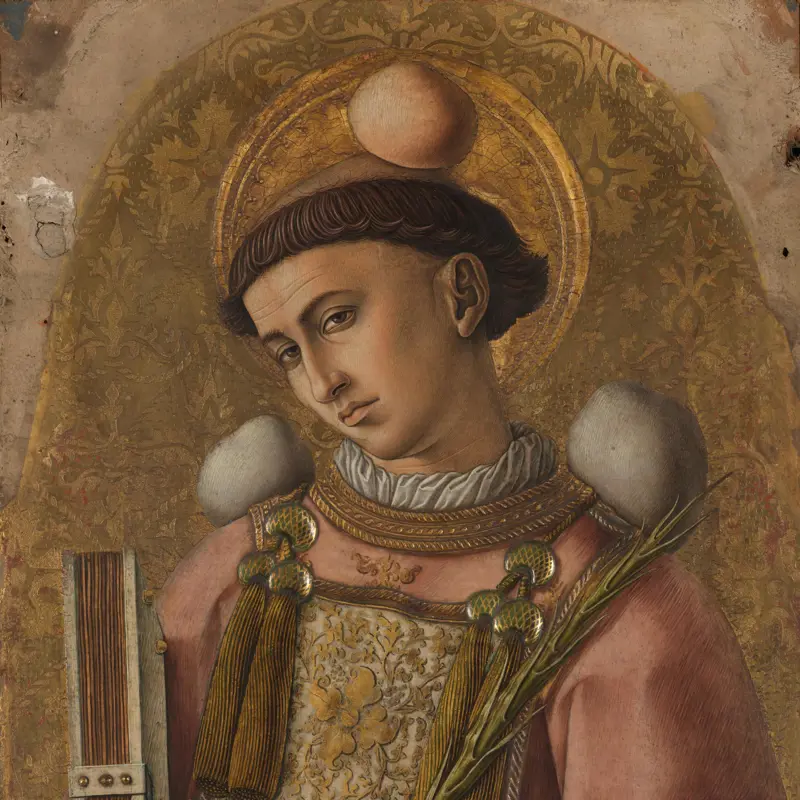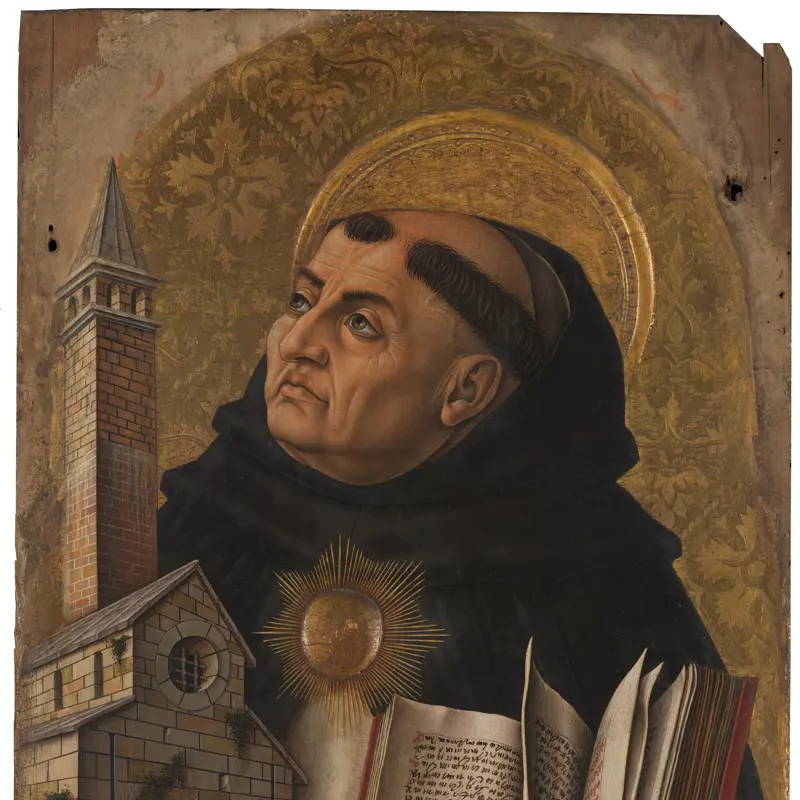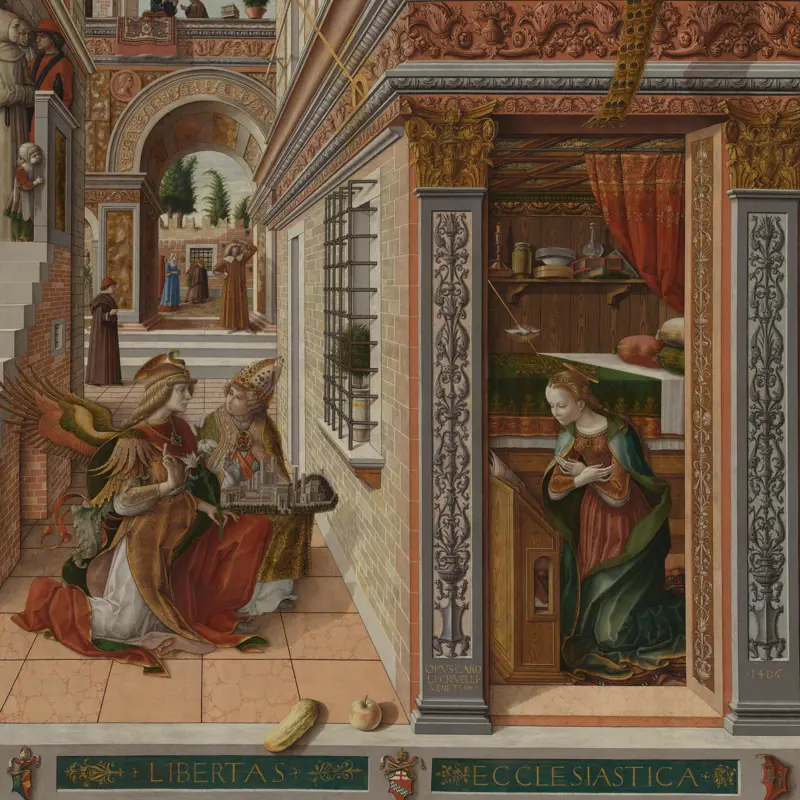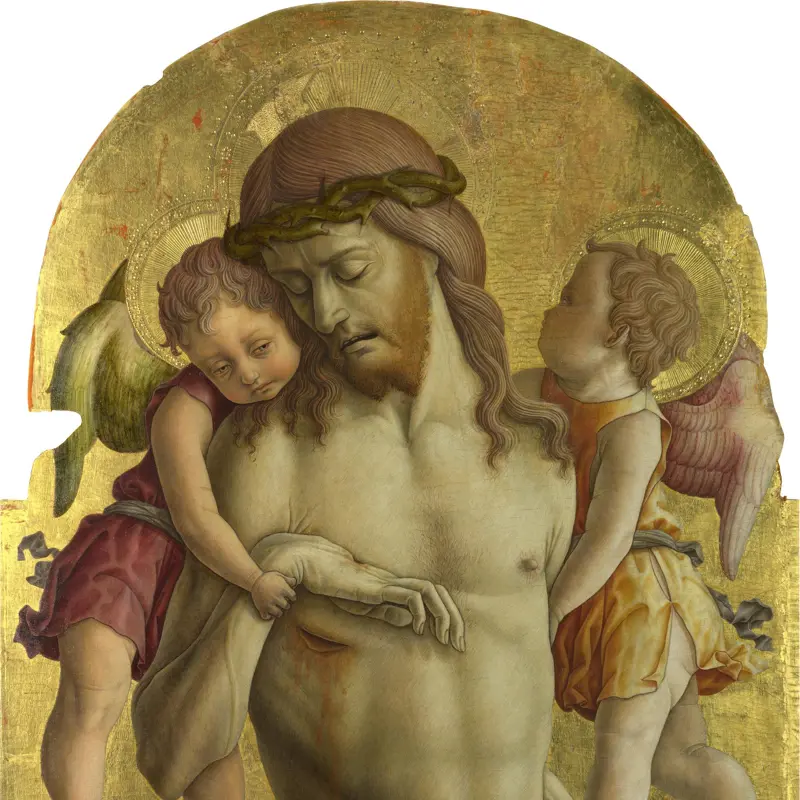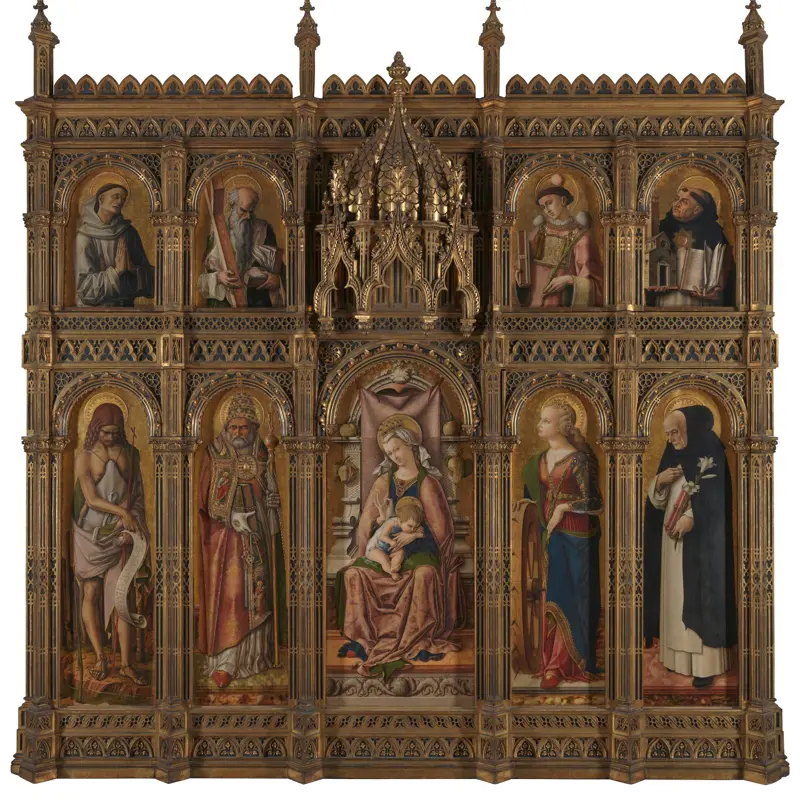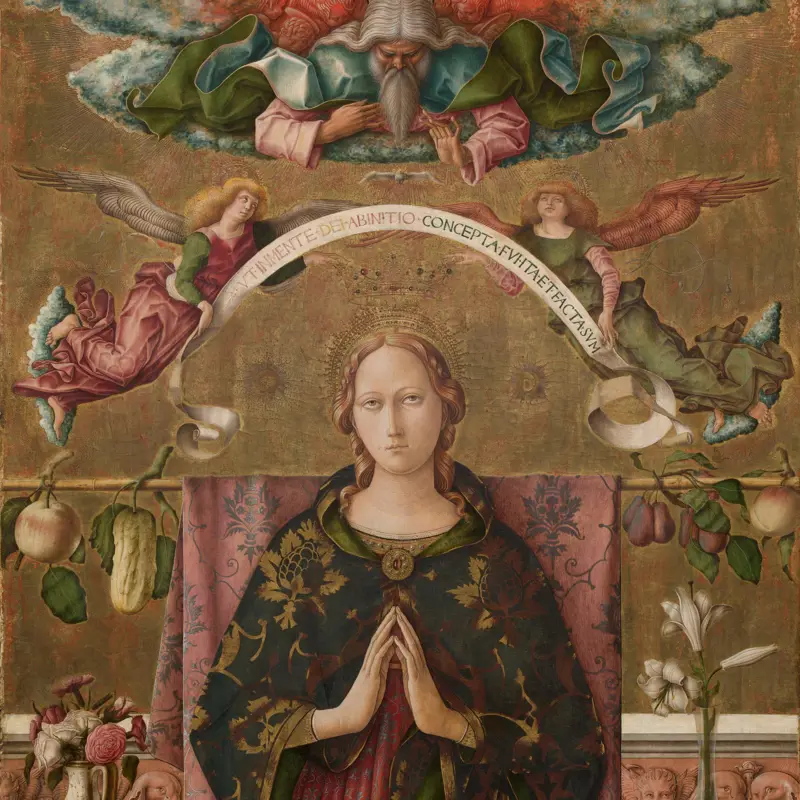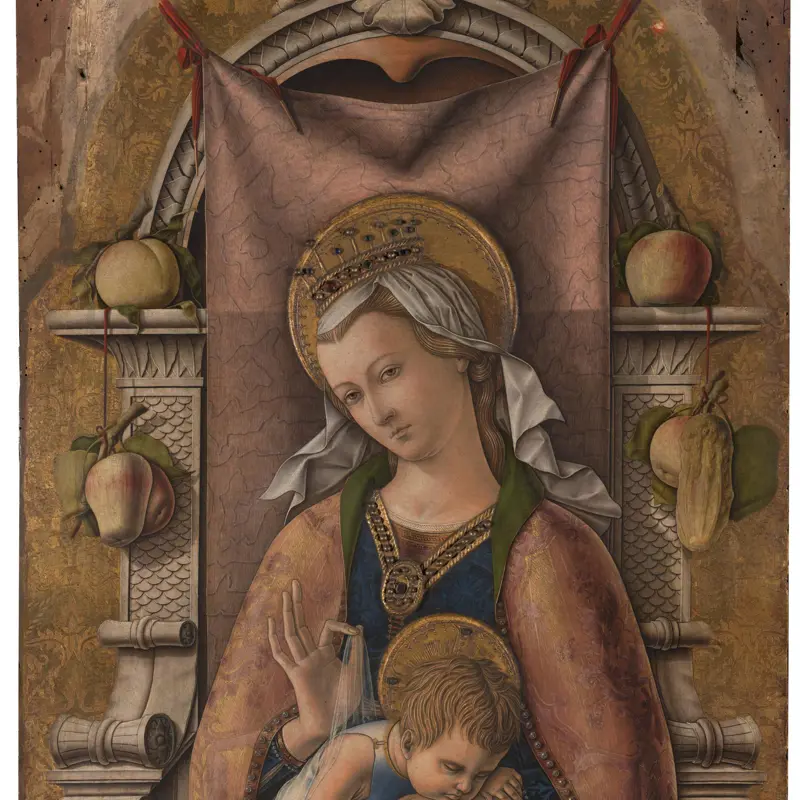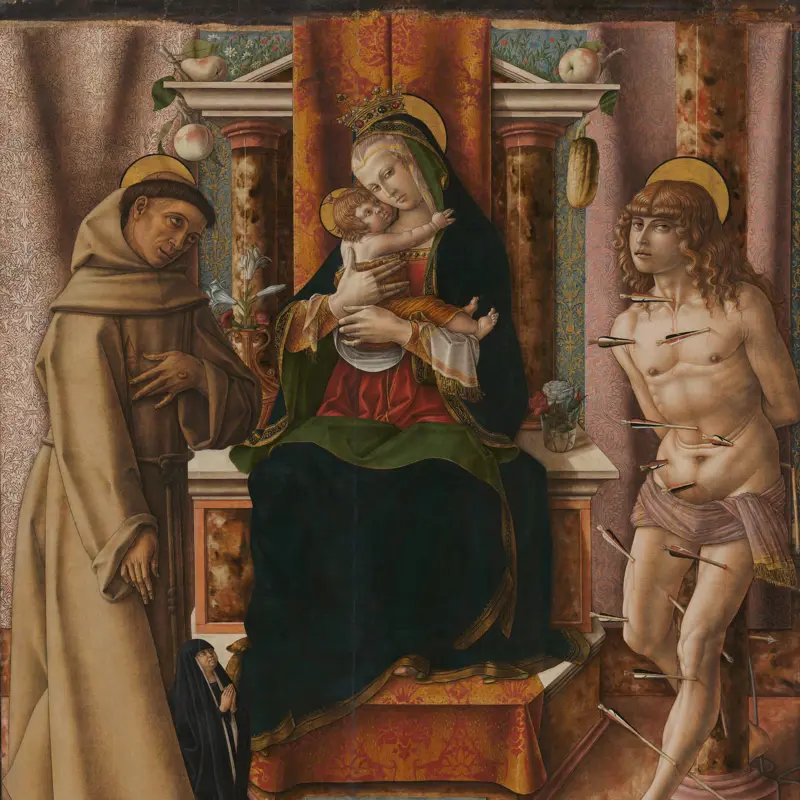Carlo Crivelli, 'Saints Peter and Paul', probably 1470s
About the work
Overview
Two saints, Peter and Paul, are deep in conversation over an open book, one pointing out a particular passage to the other. This painting comes from a polyptych – an altarpiece made of a number of panels – painted for the high altar of parish church of Porto San Giorgio, the harbour of the city of Fermo on the east coast of Italy. Peter and Paul were traditionally shown together in medieval art, symbolising the Catholic Church.
Crivelli was renowned for his highly individual style and way of handling materials to create a three-dimensional effect. Here we can see how he emphasised important parts of the painting: the haloes, Peter’s keys, Paul’s sword and the brass furnishings of the books have been built up in layers of gesso (the white mineral gypsum) so that they stand out from the flat surface.
Key facts
Details
- Full title
- Saints Peter and Paul
- Artist
- Carlo Crivelli
- Artist dates
- about 1430/5 - about 1494
- Date made
- probably 1470s
- Medium and support
- egg tempera on wood
- Dimensions
- 93.3 × 47 cm
- Acquisition credit
- Mond Bequest, 1924
- Inventory number
- NG3923
- Location
- Not on display
- Collection
- Main Collection
Provenance
Additional information
Text extracted from the ‘Provenance’ section of the catalogue entry in Martin Davies, ‘National Gallery Catalogues: The Earlier Italian Schools’, London 1986; for further information, see the full catalogue entry.
Exhibition history
-
2014Making ColourThe National Gallery (London)18 June 2014 - 7 September 2014
Bibliography
-
1951Davies, Martin, National Gallery Catalogues: The Earlier Italian Schools, London 1951
-
1986Davies, Martin, National Gallery Catalogues: The Earlier Italian Schools, revised edn, London 1986
-
2001
C. Baker and T. Henry, The National Gallery: Complete Illustrated Catalogue, London 2001
About this record
If you know more about this work or have spotted an error, please contact us. Please note that exhibition histories are listed from 2009 onwards. Bibliographies may not be complete; more comprehensive information is available in the National Gallery Library.


